Unlock the joy of outdoor living with our guide, “10 Shade Ideas for Your Next Project.” Whether you’re just starting to explore the possibilities of your backyard or you’re a seasoned pro looking to refine your oasis, this list is your gateway to creating a cool, inviting retreat. Embrace the excitement of transforming your space into a haven of comfort and style, all while keeping the sun at bay.
From enhancing aesthetics to boosting comfort, these shade solutions offer practical benefits for any homeowner. You’ll discover ideas that not only elevate your outdoor experience but also increase your property’s appeal and functionality. With our guidance, feel confident that you can craft a beautiful, shaded sanctuary that invites relaxation and enjoyment for years to come.
Install Retractable Awning Systems
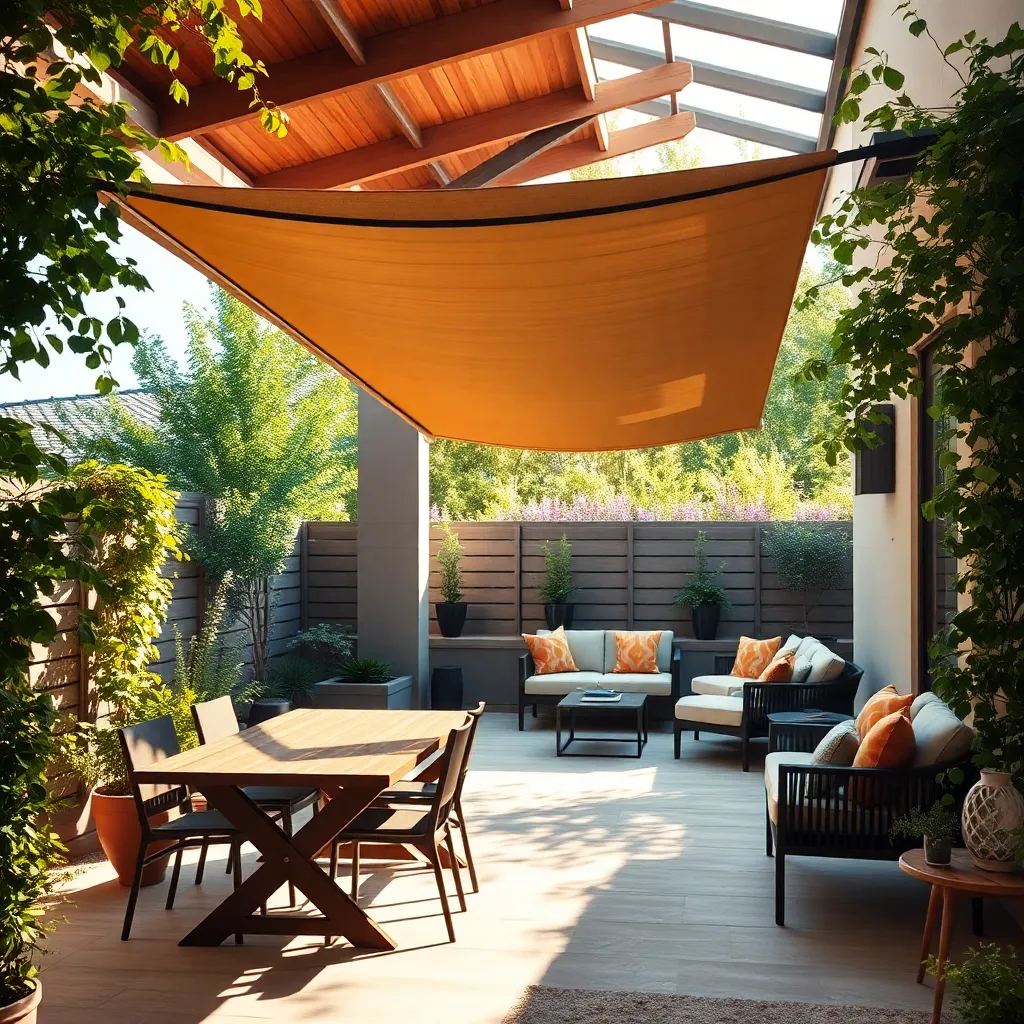
Installing retractable awning systems can transform your outdoor space by providing flexible shade options. For beginners, consider choosing an awning with a manual retractable arm, which is both budget-friendly and easy to install. These systems can be mounted on a wall or roof, with materials like durable acrylic fabrics that resist fading and mildew. To ensure longevity, look for awnings with a powder-coated aluminum frame, which offers excellent resistance to rust and corrosion.
For those looking to add a touch of sophistication, motorized retractable awning systems offer convenience at the push of a button. Advanced users might consider integrating smart controls, allowing you to adjust the awning using a smartphone app or voice commands. When planning your installation, ensure that the awning extends at least 5 to 7 feet to provide adequate coverage for seating areas. Properly measuring the area and securing the mounting brackets is crucial for a stable installation, ensuring your awning withstands various weather conditions.
Incorporate Natural Bamboo Screens
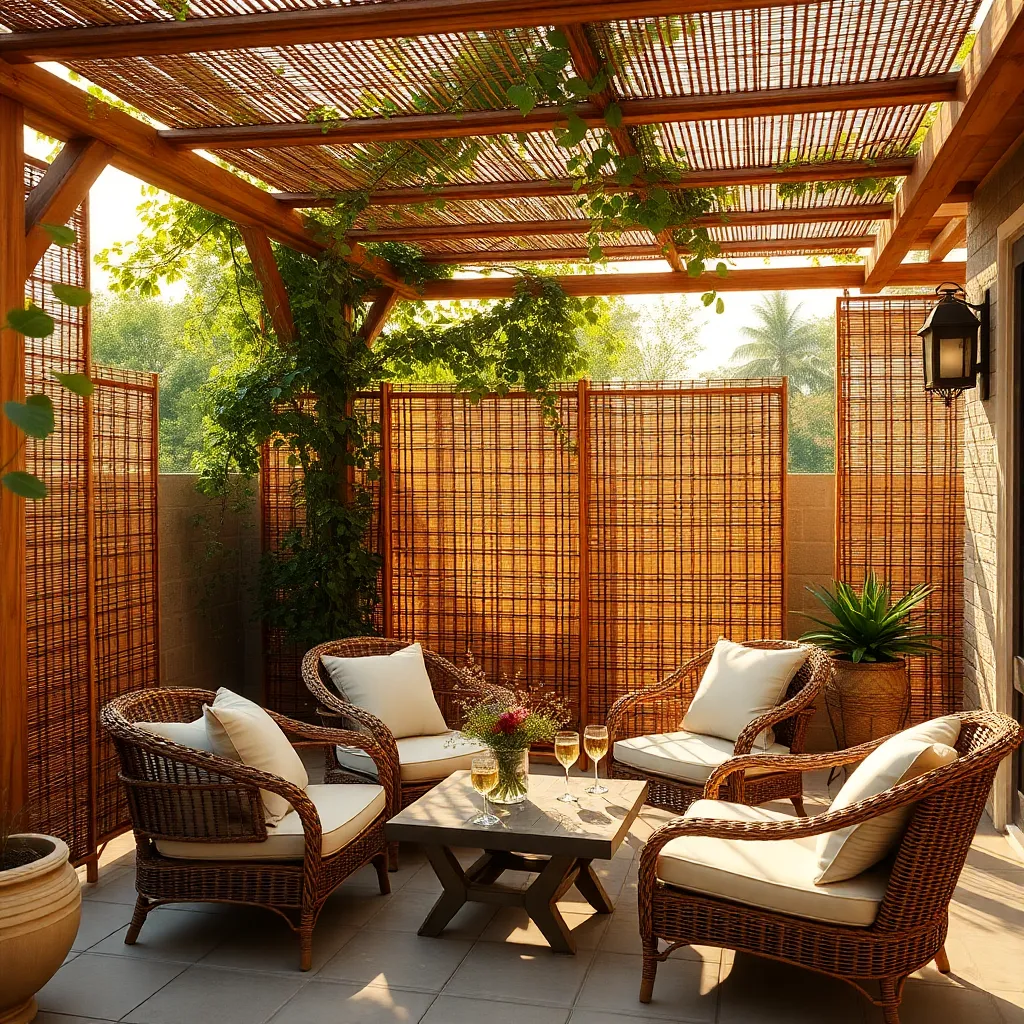
Adding natural bamboo screens to your outdoor space is an eco-friendly and stylish way to create shade. Bamboo is durable and sustainable, making it an ideal material for outdoor use. To install, secure bamboo panels between sturdy posts or along an existing fence. For beginners, pre-assembled bamboo rolls are a convenient option, while more experienced DIYers might opt to construct custom frames for a tailored fit. Whether used to create a secluded corner or as a full garden partition, bamboo screens offer flexibility in design and placement.
Consider varying the height of your bamboo screens to add dimension and interest to your garden. Standard bamboo panels typically come in heights ranging from 4 to 8 feet, but you can cut them to size for a custom look. To enhance durability, treat the bamboo with a weather-resistant sealant, ensuring it withstands the elements. For a lush, tropical vibe, plant climbing vines like clematis or jasmine at the base of the screen to weave through the slats. This combination not only provides shade but also enhances privacy and aesthetic appeal.
Position Large Patio Umbrellas Strategically
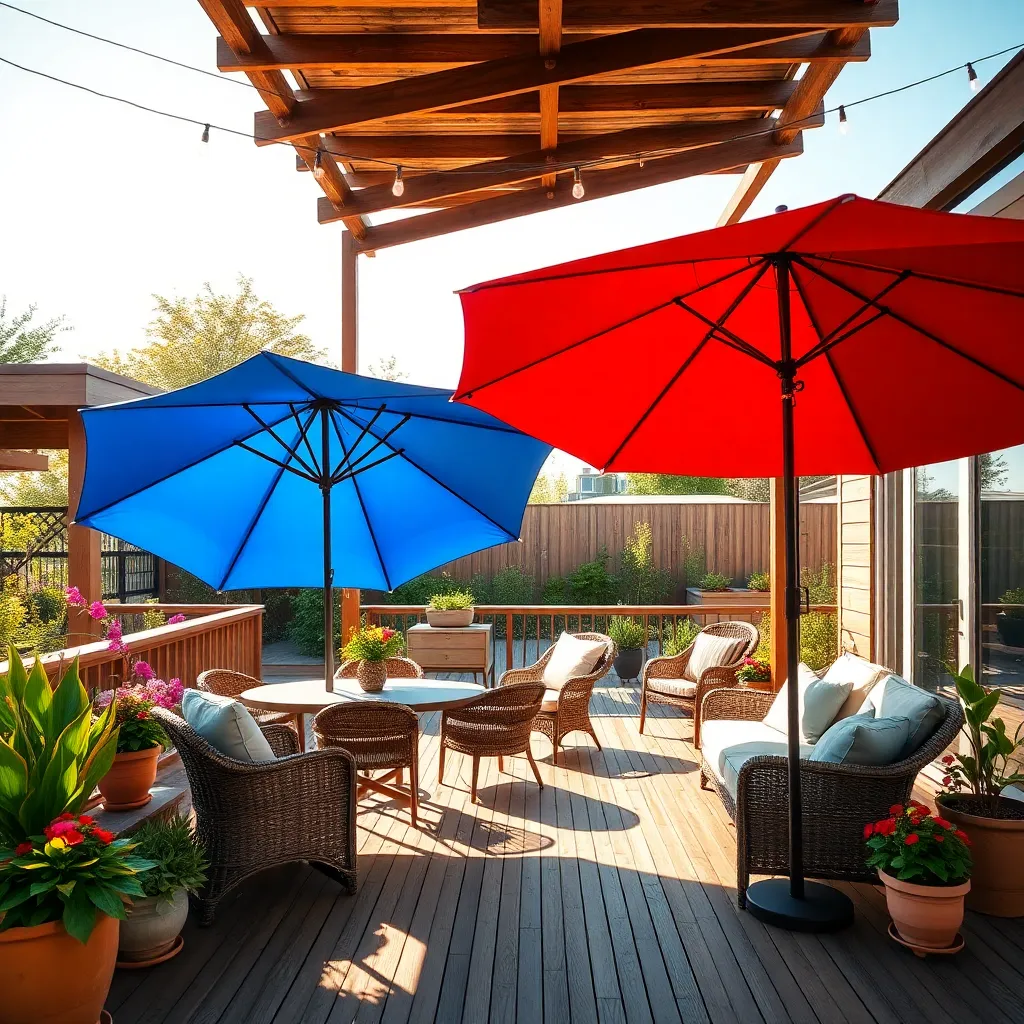
When positioning large patio umbrellas, consider the sun’s path and typical wind patterns in your area. Place umbrellas where they can provide optimal shade during peak sun hours, usually between 10 a.m. and 4 p.m. For maximum stability, select umbrellas with a wide, heavy base and adjustable tilt features. This allows you to adapt to changing sun angles throughout the day and ensures the structure remains sturdy even in breezy conditions.
For a more aesthetically pleasing and functional setup, use multiple umbrellas to cover larger areas or to create distinct zones within your outdoor space. Look for durable materials like powder-coated aluminum for the frames and UV-resistant fabrics for the canopy to withstand various weather conditions. Advanced gardeners might consider integrating a mix of umbrella styles, such as cantilever or offset models, to create a layered look while maximizing shade and flexibility in entertainment areas.
Utilize Shade Sails for Versatility
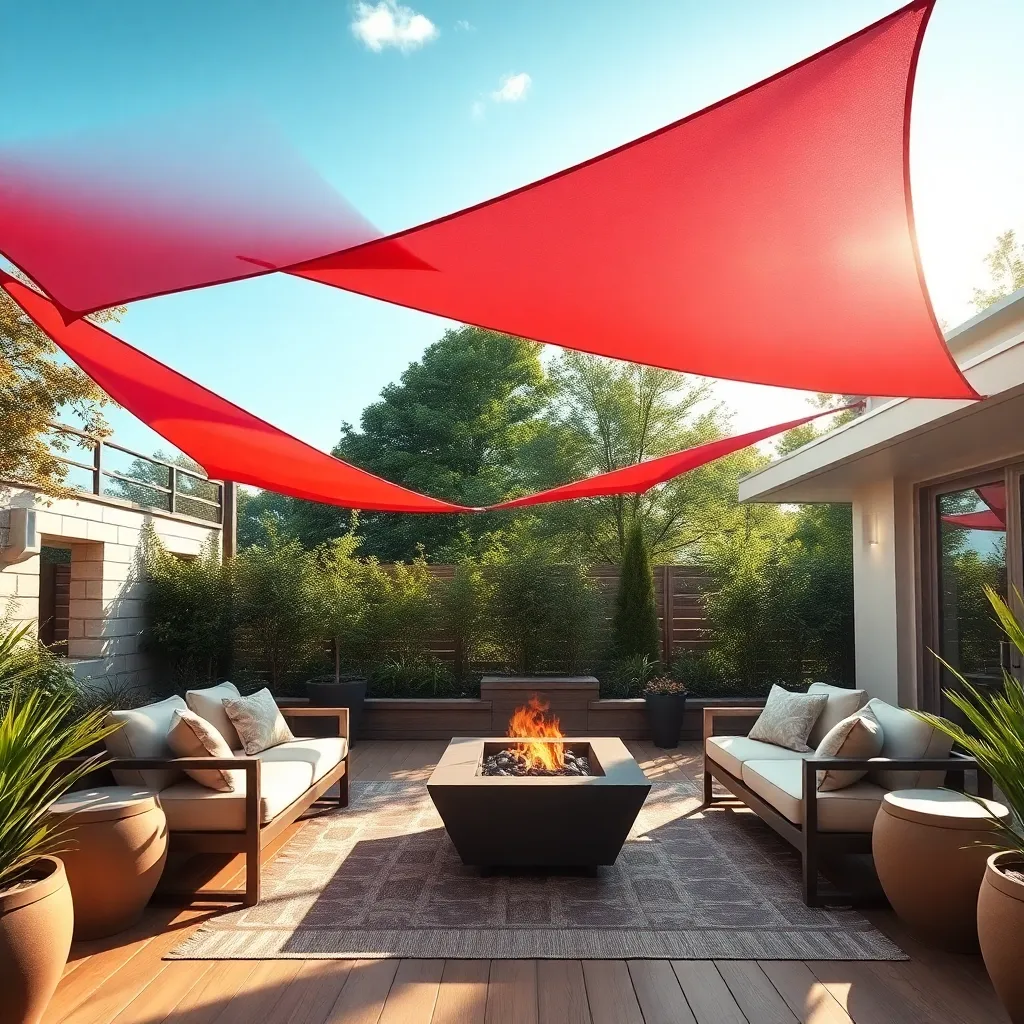
For a flexible and stylish shade solution, consider installing shade sails in your outdoor space. These versatile structures are not only aesthetically pleasing but also highly functional. Choose high-density polyethylene (HDPE) fabric for its durability and UV protection. When planning your layout, ensure that the sails are installed at an angle to allow rainwater to run off easily. Use stainless steel hardware for a secure attachment, and consider multiple overlapping sails for a dynamic look.
Beginner gardeners can start with a simple triangular sail, while more experienced DIYers might enjoy creating a custom geometric pattern. Measure your space carefully and choose sail sizes that complement your garden’s scale—common sizes include 12×12 feet or 16×16 feet. For an advanced touch, incorporate adjustable poles to modify the shade angle as the sun moves throughout the day, enhancing both function and style. With the right planning and materials, shade sails can transform your garden into a chic and comfortable retreat.
Plant Fast-Growing Shade Trees
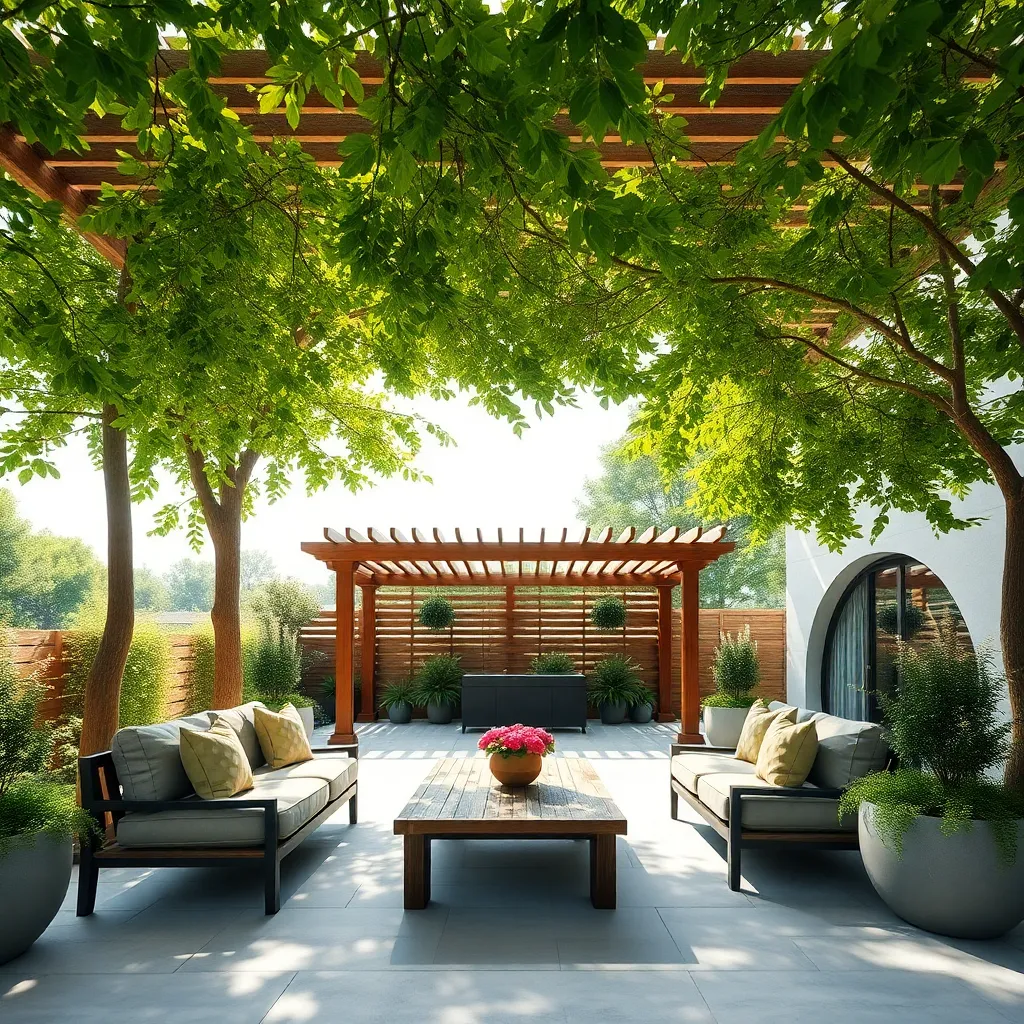
Fast-growing shade trees are an excellent choice for creating natural, sustainable outdoor shelters. Consider options like the Red Maple, River Birch, or Hybrid Poplar, which can provide substantial shade within just a few years. When planting, ensure you select a location with sufficient space for growth, ideally 15-20 feet away from your home or other structures. This distance allows the tree’s root system and canopy to expand without causing damage. For optimal growth, choose well-draining soil and apply a layer of mulch to retain moisture and suppress weeds.
Advanced gardeners might opt for strategic tree placement to optimize shade coverage and enhance aesthetic appeal. For instance, planting trees on the south or southwest side of your home can significantly reduce cooling costs in summer. It’s beneficial to prune regularly to maintain healthy growth and shape; keeping the canopy open allows for better air circulation, reducing disease risk and promoting robust growth. For those looking to add visual interest, consider trees with seasonal color changes or unique bark textures, which can create a dynamic and engaging outdoor space.
Construct a Lattice Pergola Roof
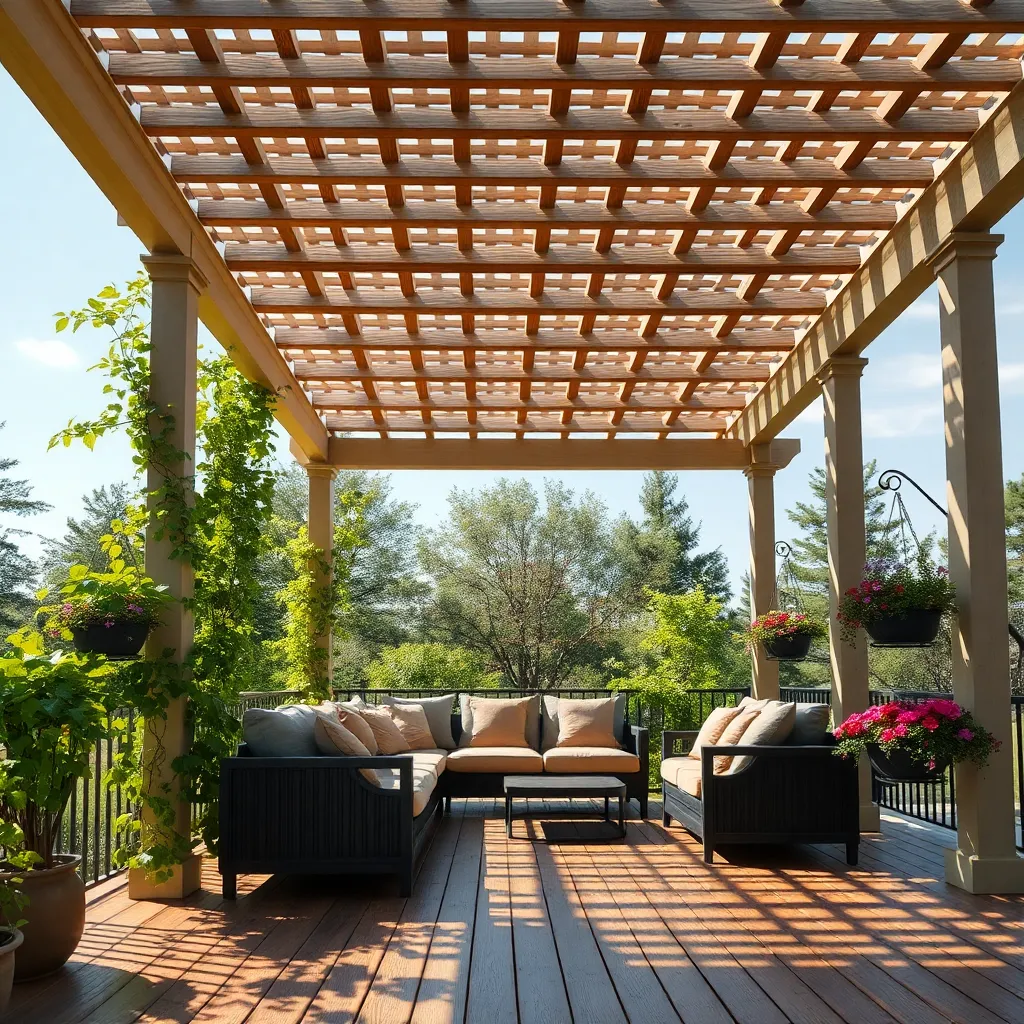
To create a stylish and functional outdoor space, consider constructing a lattice pergola roof. It provides dappled shade, allowing sunlight to filter through while offering some protection from direct sun exposure. Start with selecting durable materials like cedar or pressure-treated wood, which are known for their weather resistance. For a classic look, opt for a simple rectangular design using 2×6 beams for the frame and 2×2 slats spaced around 6 inches apart. This layout offers a solid, yet airy structure that suits most backyard aesthetics.
For beginners, using pre-cut lumber can simplify the process, while experienced DIY enthusiasts might enjoy customizing the pergola with decorative end cuts on the beams. Anchoring the posts securely is crucial, and using metal post anchors can help with stability and longevity. Consider adding climbing plants, such as wisteria or grapevines, which can intertwine with the lattice to create a natural canopy over time. Integrate lighting by threading outdoor string lights through the slats for a charming evening ambiance, making your pergola not just a daytime retreat but also a nighttime haven.
Add Curtains to Gazebo Structures
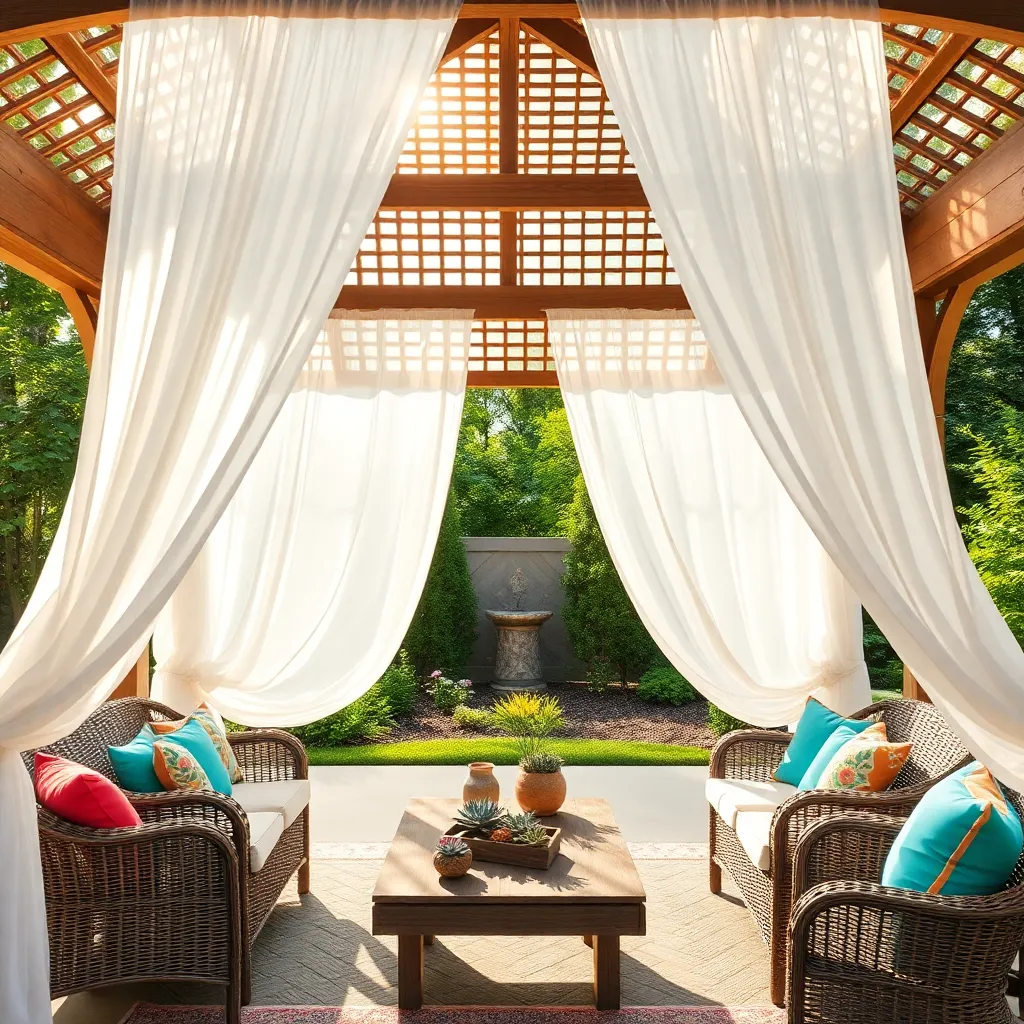
Enhance the functionality and aesthetic of your gazebo by adding curtains. This simple addition not only provides extra shade but also grants privacy and protection from insects. For a durable and weather-resistant option, choose outdoor fabric such as Sunbrella, which is available in a variety of colors and patterns. Consider using curtain rods made of stainless steel or powder-coated aluminum for longevity, as they withstand the elements better than regular metals.
When installing curtains, ensure they are easy to open and close by utilizing curtain rings or grommets. This allows for flexibility in controlling sunlight and airflow. For a polished look, measure the height from the ground to the top beam of your gazebo and choose curtains that are slightly longer to create a luxurious puddling effect. Advanced tip: Attach tiebacks to easily secure curtains during windy days, keeping them neat and functional.
Use Outdoor Shade Panels Creatively
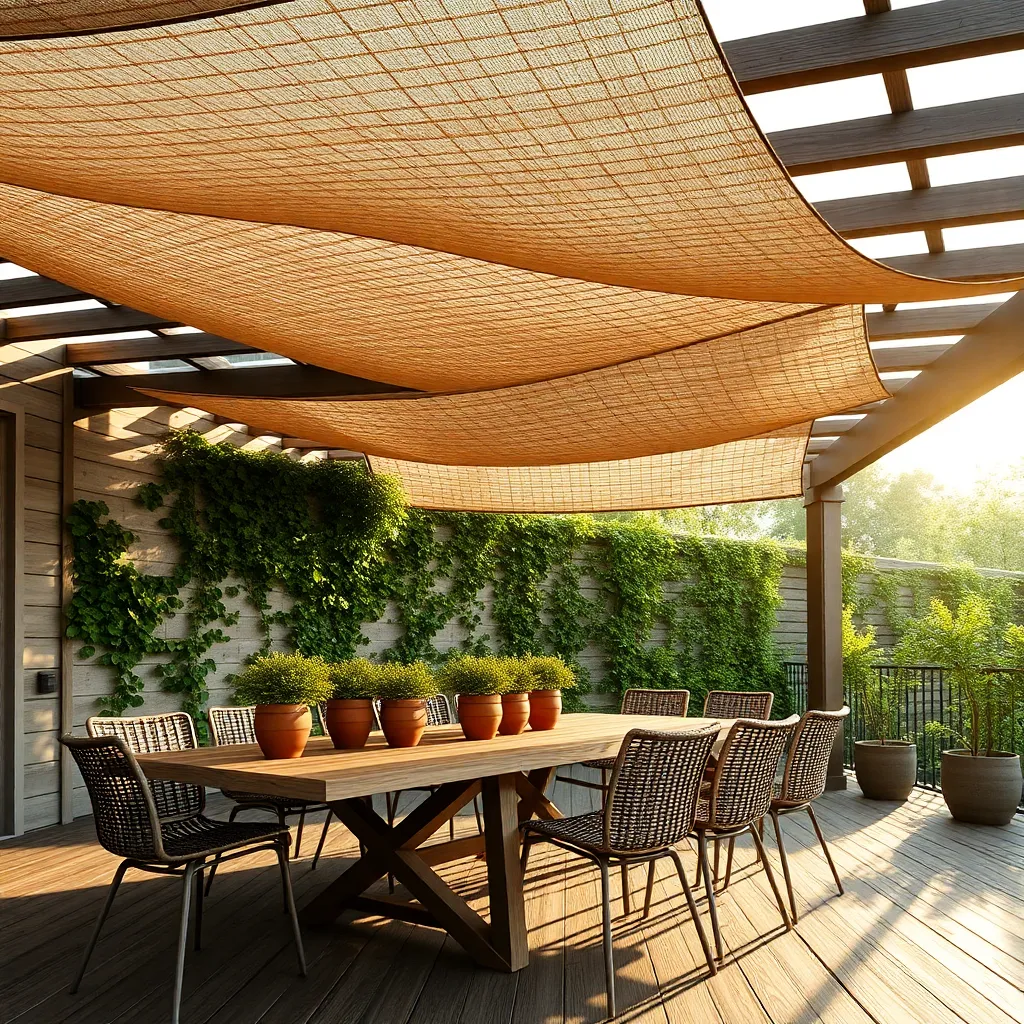
Creative use of outdoor shade panels can transform your backyard into a versatile retreat. Consider using retractable panels made from durable, weather-resistant materials like UV-treated fabric or polycarbonate. These panels offer flexibility, allowing you to adjust the amount of shade based on the time of day or season. For a more permanent solution, consider installing fixed wooden slats or aluminum panels at angles that maximize shade while still allowing airflow.
When selecting materials, think about the specific needs of your space. For a contemporary look, opt for sleek metal or treated wood panels. If you’re aiming for a more rustic feel, bamboo or woven wicker panels can add charm and warmth. Ensure proper measurements by taking into account the sun’s path and the angles at which panels should be installed. For advanced DIY enthusiasts, adding a motorized system for retractable panels can be a rewarding project that boosts convenience and adds a touch of luxury.
Opt for Adjustable Canopy Tents

Adjustable canopy tents are a versatile solution for creating shade in your outdoor space, offering flexibility and style. These tents are perfect for those who need a temporary or portable shade solution, making them ideal for events or gatherings. Choose a canopy with a high-quality frame, such as aluminum or steel, to ensure stability and durability. For the cover material, look for options like polyester with a UV-resistant coating to protect against the sun’s harmful rays.
For added convenience, opt for canopies with adjustable legs and tilting features, which allow you to customize the shade angle as the sun moves. This adaptability is particularly useful for gardens or patios that experience varying sun exposure. Beginners will find these tents easy to set up, often requiring no tools, while advanced users might explore additional features like sidewalls or mosquito netting to enhance comfort. Consider a tent size that suits your space and usage needs, typically ranging from 8×8 feet for smaller areas to 10×20 feet for larger gatherings.
Employ Sunshade Fabrics on Decks
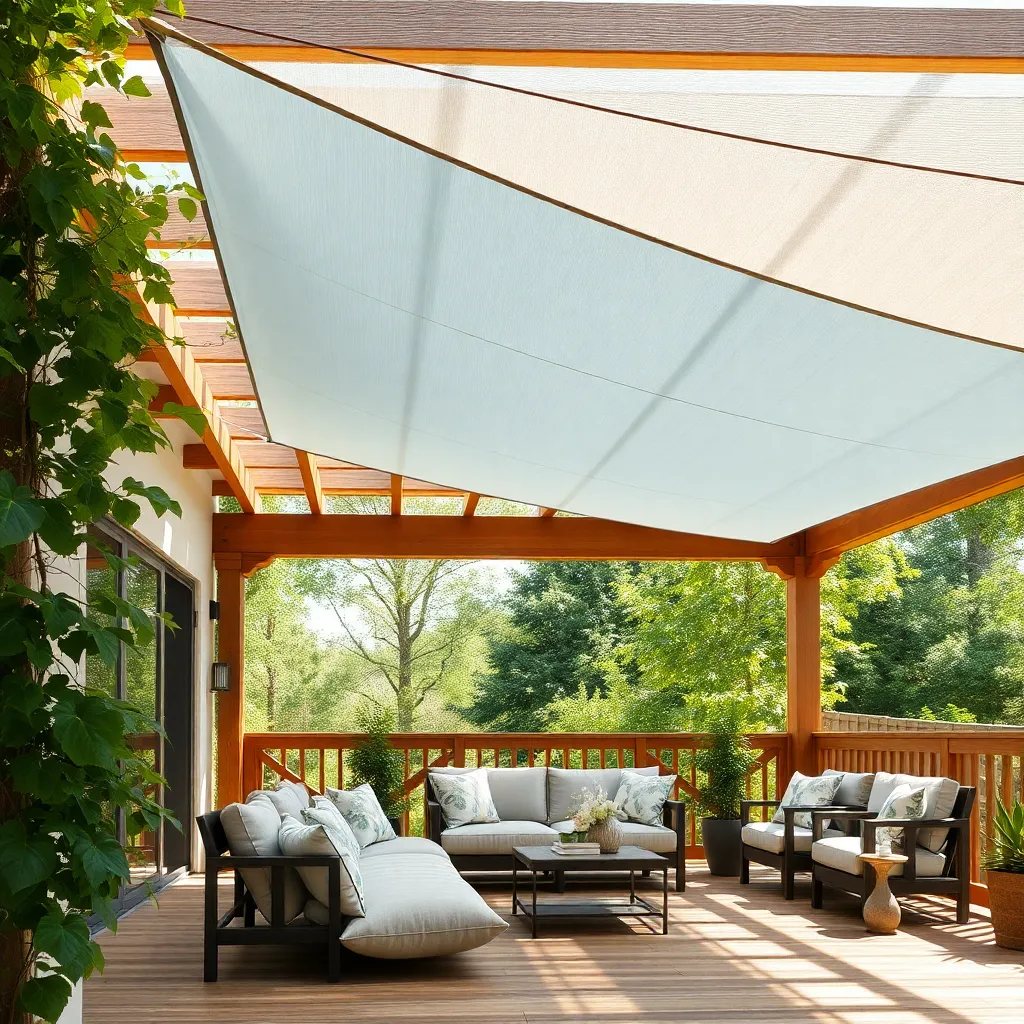
Transform your deck into a cozy retreat by employing sunshade fabrics, which can effectively reduce heat and provide UV protection. For a simple and versatile setup, you might consider using fixed or retractable shade sails. These are easily mounted using sturdy poles or existing structures like walls, offering both style and functionality. For beginners, opting for a polyester fabric with UV inhibitors is a great start, as it provides durability and sun protection. Ensure you measure your deck accurately, allowing for a slight slope of about 20% to facilitate water drainage.
For those looking to elevate their design, consider using custom-cut sunshade fabrics that match your outdoor aesthetic. Advanced options include selecting high-quality materials like acrylic-coated polyester or Teflon-treated fabrics, which offer enhanced weather resistance and longevity. Install these with stainless steel hardware to prevent rust and ensure stability. To add a touch of elegance, incorporate decorative elements such as trim or edge binding in contrasting colors. This not only enhances visual appeal but also adds a personalized touch to your outdoor space.
Conclusion: Creating Beautiful Outdoor Spaces
In exploring the ’10 Shade Ideas for Your Next Project,’ we delved into transformative concepts to enrich your relationships: fostering open communication, embracing vulnerability, practicing active listening, nurturing trust, setting healthy boundaries, celebrating small wins, prioritizing quality time, expressing gratitude, resolving conflicts with empathy, and supporting each other’s growth. Each idea serves as a pillar to strengthen and deepen your connections, laying a foundation for a more fulfilling and resilient partnership.
As an actionable next step, choose one concept to focus on this week. Perhaps it’s dedicating an evening to undistracted quality time or initiating a heartfelt conversation to express gratitude. Small, consistent actions can lead to significant transformations in your relationship dynamics.
To continue benefiting from these insights, bookmark or save this article as a handy guide for nurturing your relationships. Keep it close for those moments when you need a gentle reminder of the essential building blocks of a thriving partnership.
Looking forward, remember that every small step you take is a stride toward a future filled with love, understanding, and mutual growth. Empower yourself to cultivate the relationship you envision and let this be your roadmap to lasting success.
